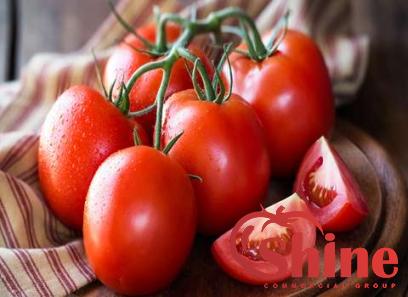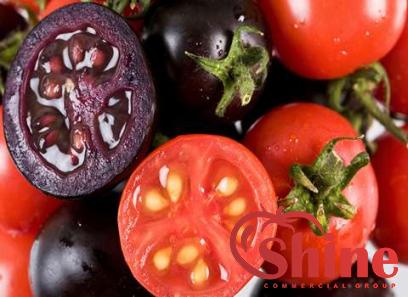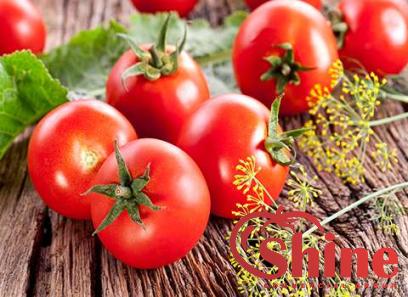tomato paste flow chart
Concentrating the pulp that has been acquired by either a hot or cold break flow chart allows for the production of tomato puree and paste
Tomatoes that have reached their full maturity and have a dark red color are ideal for use in the production of tomato puree and paste
A concentrated form of tomato juice or pulp, free of the skin and seeds of the tomato, and containing at least 25 percent tomato solids is what we mean when we talk of tomato paste
The term “concentrated tomato paste” refers to tomato paste that has been further concentrated to a tomato solid level that is at least 33 percent
In order to obtain pulp or juice that has a consistency that is consistent throughout, the tomato must first be strained or filtered so that portions of its skin, seeds, and large, coarse particles can be removed
Only then can the tomato be used to make pulp or juice
When preparing puree, the first step is to concentrate the juice or pulp by evaporating it in a vacuum kettle or an open kettle
After that, the process of evaporation is repeated until the volume of the puree is either equal to or half of what it was before
For the purpose of determining the total soluble solids, a hand refractometer is utilized, and the results are expressed in degrees Brix

This is the method that is used to locate the endpoint
You might also determine it by using a bottle that has a specific gravity reading on it, or by drying the juice or pulp in a vacuum at a temperature of 70 degrees Celsius
Both of these methods are viable alternatives
After that, the puree that has the necessary amount of total soluble solids is put into cans while the temperature is between 82 and 88 degrees Celsius
The cans are then processed in water that is boiling for twenty minutes
After the processing of the cans, they are cooled as rapidly as possible, either by being soaked in cold water or by being sprinkled with cold water
After that, the cans are stored in a dry and cool location until they are needed again
To make tomato paste, the first tomato juice or pulp is concentrated in an open kettle with a steam jacket to reach total solid levels in the range of 14-15 percent
Next, the concentrated tomato paste is further concentrated in a vacuum pan to achieve the desired consistency
The process of making something starts here with this initial step
Adding ordinary salt, basil leaf, or sweet oil created from basil leaf is another option for reducing the amount of excessive foaming, burning, and sticking that occurs when cooking in an open kettle
These ingredients can be used in addition to sweet oil made from basil leaves
In the vacuum pan, evaporation of the water that is pulp or juice starts to occur when the temperature reaches 71 degrees Celsius
It helps to keep the flavor intact while also ensuring that the color stays a bright, brilliant red
The removal of air also tests for any oxidative reaction that could have a detrimental impact on the nutritional value, such as the loss of vitamin C
This is done because oxidative reactions can have a negative influence on the nutritional value
The vacuum is broken, the temperature is raised to 100 degrees Celsius, and it is kept at that temperature for somewhere in the neighborhood of ten minutes in order to sterilize the product

The increase in the demand for tomato-based foods in India has led to an increase in the production of tomato sauce and ketchup, which are two of the most popular kinds of tomato-based food in the country
The demand for tomato-based foods in India has resulted in an increase in the production of tomato sauce and ketchup
This approach, which is simultaneously one of the quickest and easiest procedures that can be accessed, can be used to preserve the tomato solids
As per FSSA standards, Tomato ketchup and tomato sauce are two names for the same product, which is made by first combining tomato juice, tomato puree, or tomato paste of an appropriate concentration with nutritive sweeteners, salt, vinegar, spices and condiments, and any other ingredient suitable to the product, and then heating the mixture to the consistency that is desired
Tomato ketchup and tomato sauce are two names for the same product
Both tomato ketchup and tomato sauce refer to the same product but by different names
Once it has been diluted with water that is suitable for the purpose of keeping the product’s essential composition prior to being put to use, tomato paste can be used
This must be done in order to prevent the paste from losing its essential composition
Having said that, this step cannot be skipped and must be finished before the product may be used
The final product must have an acidity of at least 1
0 percent as acetic acid and content of total soluble solids of at least 25
0 percent in order to meet the requirements
Both of these prerequisites have to be satisfied (on a salt-free basis)
In addition to this, the product must have microbiological properties that are suitable for human consumption in order for it to be sold

Ketchup and sauce created from tomatoes can be prepared in a few different ways: by utilizing freshly extracted juice or pulp, tomato puree or paste, or both
Ketchup and sauce must have at least 12 percent tomato solids, 25 percent total solids, and a minimum acidity of 1 percent acetic acid
This is accomplished by cooking or concentrating tomato pulp or juice that has been strained, along with spices, salt, and sugar
Vinegar is also added to the mixture
When making tomato ketchup, one of the most important steps is selecting the tomatoes with great care because this step can have an effect not only on the final product’s quality but also on how long it can be stored
The criteria for selection include the candidate’s level of maturity as well as the absence of flaws and imperfections
Tomatoes that are ripe, deep red in color, have a greater total soluble solids content and have more pulp produce a higher quality product
The amount of pectin in the product, as well as its pigmentation, are two essential parameters that define the quality of the completed product
It is recommended that all of the green and yellow-colored parts be removed
Chlorophyll and xanthophyll, which are both found in immature fruits, combine during heating to generate the brown-colored chemical, which has the potential to negatively impair the product’s acceptability
If green tomatoes are utilized, not only will the appearance of the product be altered, but also the flavor
You have the option of utilizing either a hot or cold pulping procedure to obtain the pulp or the juice
However, the hot pulping procedure results in a pulp that has a higher lycopene and pectin content, as well as a higher proportion of total solids, and it has a good microbiological quality

The pulp or juice that has just been freshly extracted can be utilized as starting material, as can pulp or juice that has been kept, as can puree or paste
By using a puree or paste with an appropriate total solid level, you can manufacture ketchup with a quality that is consistent across batches while still maintaining that quality
The spices that are used in the food need to be of good quality, and there should be an appropriate number of them throughout the dish
This will ensure that the finished product has a flavor and taste that are to the liking of the customer
The flavor of the tomato in its natural state is not obscured by the presence of any one particular spice
In the making of ketchup, some of the most common spices include red chili, black pepper, nutmeg, clove, cinnamon, cardamom, mace, and cumin
Other common spices include cumin, mace, and cardamom
Cumin and mace are two other common types of spices
Ketchup can be made using a variety of different ingredients in addition to these spices, some of which include onion, ginger, and garlic
In order to prepare ketchup or sauce of good quality, it is vital to take certain safety precautions when adding spices
These precautions may vary depending on the spice
For a more even distribution of the flavor components in the ketchup, the red chili powder, spices, onion, and ginger should be wrapped loosely together in a bag
Before crushing cloves, the head of the cloves should always be removed since this can prevent a flaw in the ketchup known as the black neck

Garlic is typically not a recommended condiment for use in the production of ketchup or sauce since its flavor has the potential to overpower that of other spices
Instead of utilizing powder that has been finely ground, it is recommended to utilize the essence of clove, cinnamon, and cardamom because it is more convenient to use and produces a superior flavor note in the completed product
During the process of making ketchup or sauce, the following are some of the possible applications for the spices









